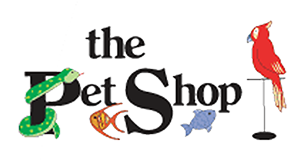WHY PARROTS LOVE BIRD TOYS
Many pet owners who have previously had parrots or other kinds of birds in the home are aware of the fact that many bird pets seem to really need a variety of different bird toys that they can play with. At first glance, it might seem that the primary need for these toys is to fulfill the parrot’s innate desire to chew on things and to keep its beak strong.
This is without a doubt one of the instinctive appeals for parrots, because their beaks are strong enough to crack even the most stubborn nuts out in the wild, and it’s just a natural thing for them to want to maintain that same kind of strength in their beaks. But there are other aspects of their natural lives in native habitats which have additional powerful influences on their behavior, even when they are in a domestic environment, in someone’s Massachusetts or Nebraska home.
In their native environments, parrots are predominantly involved in finding food and water throughout the day, as well as fleeing from natural predators. Over centuries of development, this has given them skills in the areas of intelligence, physical capabilities, and exceptionally sharp memories. Memory function comes in very handy when they need to recall the precise location of safe trees and shelters, as well as areas that provide life-giving food and water.
When developing naturally, parrots are also very strong flyers, unless their flight feathers are clipped at a developmental stage, and when that happens they never become good flyers, even when their flight feathers grow back.
So how do all these natural capabilities translate to domestic situations, wherein parrots are maintained in a caged environment, with all their real needs provided for them? This is exactly the point where pet toys can come into play because they can allow parrots to exercise those natural abilities and instincts, even though they are far removed from the rainforests native to their species.
As pet owners, we should all recognize that these are very powerful instincts, ingrained into the birds over many, many years and that if they don’t get the chance to express these instincts in their current environments, they might become anxious, unsatisfied, and downright unhappy.
Below are described several categories of parrot toys which fulfill these basic needs for the birds, giving them a chance to act out their natural instincts in ways that are suitable to their domesticated circumstances.
Foraging Bird Toys
These kinds of toys fulfill the need for parrots to forage for food because that is an activity which would ordinarily take up almost 90% of their time in a natural setting. In order to fulfill the struggle which a parrot needs to obtain its food, you should put small amounts of food in places where the bird must navigate around or through some kind of toy, in order to get the prize it is seeking.
There’s no problem with leaving small amounts of readily available food sometimes, but if you can devise ways of making your parrot work to get its food and water, it will instinctively appreciate the exercise and feel more in tune with its new environment.
Gymnastic Bird Toys
There are a number of swinging-type toys that you can install in your parrot’s cage, such as braided rope, swings, bridges and other such items, which will help to approximate its natural treetop environment, and which will allow it to engage in healthy exercise. All these things encourage movement from your parrot, and that is greatly preferable to having a disinterested bird which sits in a single location, doing pretty much nothing.
Puzzle Bird Toys
Some pet shops offer puzzle bird toys which are similar in construction and intent to those which are sold in toy stores, and which are intended for use by small children. Some of these are brightly colored offerings, so as to catch the bird’s attention, but all of them have some basic problem to solve, and that’s the appeal to your parrot.
This is where its strong memory comes into play, as well as its natural intelligence, and when you find a puzzle toy which particularly captivates your pet, you may notice that the bird spends many hours of the day trying to work out a solution to that particular puzzle.
Chew Bird Toys
Almost any kind of a wooden chew toy is a great distraction for your parrot, as long as the wood is not made from cedar or any of the conifers, because these can be harmful to your bird. The wooden toys are excellent for parrots to gnaw on and chew, because they do a great deal of this in their rainforest environment, and they will still feel the instinct to do the same thing in a more domesticated situation.
You may even want to provide your parrot with some kinds of nuts because many different parrots are downright experts at cracking open nuts and eating the sweet treat inside. The only trick to this will be to find the kind of nuts that your parrot prefers, so that it will be motivated to break into it, to obtain the treat.
Keep in mind that many species of parrot are fairly intelligent birds, particularly the African Green Parrot and the Eclectus Parrot, so when you provide your pet with different kinds of toys, you may have to change them out periodically, in order to keep your pet engaged. By providing your smart, feathered friend with new toys every so often, you will spark its interest repeatedly, and ensure that its natural instincts are allowed to have free reign in its new environment.
